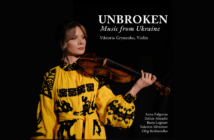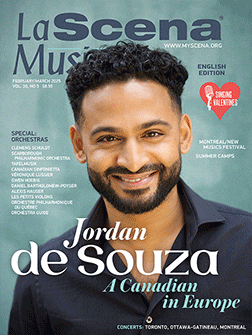This page is also available in / Cette page est également disponible en:
![]() Francais (French)
Francais (French)
Went well, as they say. There were no calamities to report after the webcast debut on Sunday of Rafael Payare as the music-director-to-be of the Montreal Symphony Orchestra. Nor many revelations in a 65-minute program (film intro included) of standards by Berlioz and Brahms from the empty Maison symphonique.
Perhaps these will be forthcoming in two online concerts still not announced. Or at least sometime before September 2022, when the MSO appointment becomes official.
Rather than offer something new, the 40-year-old Venezuelan chose to pay homage to MSO tradition and to symphonic tradition in general. First up was Berlioz’s Carnaval Romain, a great showpiece of the Charles Dutoit era that was often given as a starter or an encore. This performance had the requisite breadth and pep, with much gratifying detail in the buildups to the fortissimo statements.
Dressed in custom tails with shiny buttons, Payare made clear with his ample facial expressions that he had good reason not to wear a mask. His arm gestures were generous and more or less continuous in Brahms’s First Symphony. I wondered sometimes why so much movement was required to produce such a conventional performance. Seldom did I hear a distinctively contoured phrase, an idiosyncratic rhythmic touch, or anything that stamped the interpretation as the property of Rafael Payare.
Dynamics often seemed lodged at mezzoforte, even in the Andante sostenuto. The violin solo of concertmaster Andrew Wan was not easy to detect above the winds. Whether pickup conditions on stage have a bearing on results at home is an inevitable question, to say nothing of the spread-out configuration of the players imposed by distancing rules. But the MSO and the audio team are used to the new normal.
The best part of the symphony was the finale. Payare’s beat was more flexible in the introduction to this great movement. Horn and flute solos opened up mountain vistas and pizzicati were spot-on. Brass chorales, soft and loud, sounded warm and cohesive. This was the work of a premium orchestra.
And certainly a capable conductor. But sorry, no rave today. No reason to panic either. I recall being underwhelmed in 2006 by the inaugural appearance as music director by Payare’s predecessor, a certain Kent Nagano. He turned out all right.
This concert is available free as a replay at www.osm.ca or www.medici.tv.
Passing notes: The MSO reports that more than 75,000 viewers from 52 countries tuned into the concert on Sunday…Payare grouped first and second violins on his left rather than (as per contemporary fashion) dividing them…The conductor did not use a score in either work…Associate principal oboe Vincent Boilard played cor anglais in Berlioz and first oboe in Brahms. I am told that veterans Pierre-Vincent Plante (cor anglais) and Ted Baskin (oboe) are still on the MSO roster…Most string players wore masks…Two more online concerts with Payare are planned in the next seven days. Details TBA…The Tuesday webcast featuring Beethoven’s Seventh with conductor Jean-Marie Zeitouni was recorded on Nov. 24.
This page is also available in / Cette page est également disponible en:
![]() Francais (French)
Francais (French)














